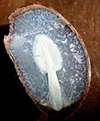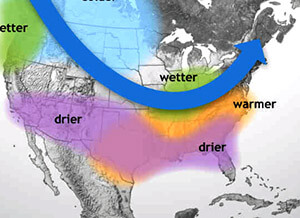With drier than normal conditions across much of the Southeast this autumn, our fall foliage was some of the most beautiful I have seen in many years. As the last of the fall color leaves us (no pun intended) our attention is now directed to the onslaught of winter.
As you saw in last month’s column, the Climate Prediction Center is forecasting warmer than normal winter temperatures. It is also calling for equal chances for above or below normal rainfall. However, I have seen some things happening in nature that contradict these predictions.
I have seen a great many deer with gray and dark gray coats. I’ve read a few articles on this and found out when a deer’s coat turns gray in October, it’s a sign of a harsh winter ahead. Lots of acorns on the ground doesn’t necessarily mean the squirrels can predict the weather this winter. What it usually means is it’s a mast crop season. A mast crop, or overabundance of nuts, happens in a two- to five-year cycle. What triggers it is largely a mystery, even though scientists speculate climate is a factor. Squirrels drop the plentiful nuts at a rapid pace, but not because they know a bad winter is coming.
Tree leaves that fall early indicate winter will be mild. When leaves fall late, winter will be wild. If the leaves wither on the branches in October instead of falling, an extra cold winter is in store.

A persimmon seed “spoon.”
Then we have the persimmon seeds. Many of you have sent me pictures of the seeds in your yard. Most have the “spoons” which is supposed to indicate a snowy winter. In all honesty, November is too early to predict a snowy winter.

It’s really been a while since we’ve seen a significant snowstorm. However, when we have a La Nina year, like we’re having again for the third year in a row, it’s not too conducive to snow. Here’s a map showing the mean position of a La Nina Jet Stream. It may bring us some very cold weather but not necessarily snow. By the way, winter officially begins Wednesday, Dec. 21, at 4:48 p.m. EST.




